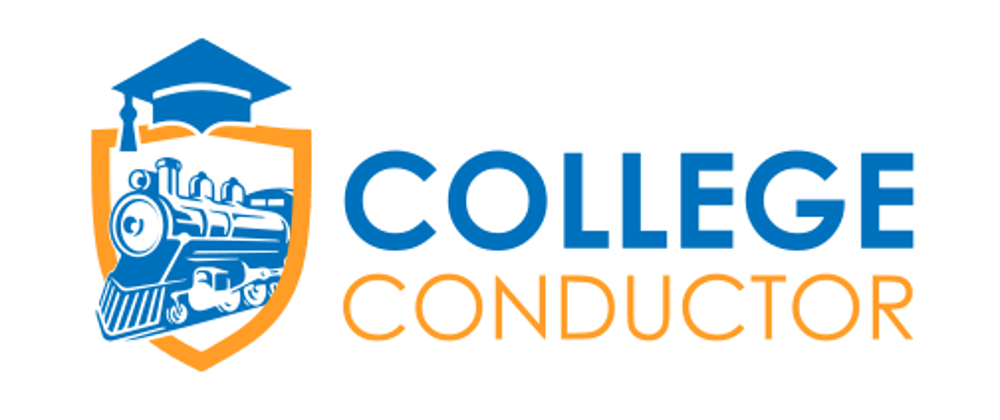My Software as a Service failed. After three years of running College Conductor, I'm shutting it down. The service failed for a host of reasons, and this article details what I learned from the whole experience. This is a chance for me to reflect, and give you some ideas of what pitfalls can happen if you're planning to build a SaaS.
The vision
Before getting to the lessons, let's look at my vision for the service so you have some context of what I was building.
College Conductor was a tool for college counselors, and, more specifically, for independent education consultants, which is a group that included my wife. Back when I started, my wife lamented about the quality of the online tools available to help her run her business.
She wanted a tool that could keep track of the students she worked with. Independent educational consultants focus on helping students find the right college or university for them. My wife observed that the existing tools for IECs (as the industry calls them) felt dated and clunky. She desired a tool that would keep track of all the schools that a student wanted to attend so she could manage college applications, deadlines, and all the other details that go with the job.
As a software engineer, I saw the chance to create something in a narrow vertical that could serve this industry.
The initial plan
My initial plan sounded simple: build an app that would track schools and admissions deadlines.
In the spirit of doing things that don't scale, I planned to get as many US colleges and universities as I could into a database. From there, I would operate as the Wizard of Oz and manually look up the admissions deadlines for a school whenever my wife added the school to a student's list. (Adding the school to a list would trigger a "back office" task to inform me that I had work to do.) To me, this felt like the scrappy kind of attitude that I needed to build something quickly.
For the technology side, I wanted to make choices that would be with me for the long haul (which you will see is ironic later). My short list of technology looked like:
- Django to power an API.
- Ember as the client app.
- Semantic UI for the look and feel.
- Ansible for handling deployment.
Ember and Semantic UI were new to me, but I figured that some technical risk on those choices would pay off in the long run. I was wrong, and we'll dig into why.
Not-so-boring technology choices
When I started, I wanted to follow the advice to choose boring technology. For me, this meant:
- Deploy to a virtual machine.
- Use a relational database like PostgreSQL.
- Stick with a mature framework like Django.
In the boring technology article, the author, Dan McKinley, writes:
Let’s say every company gets about three innovation tokens. You can spend these however you want, but the supply is fixed for a long while.
In my mind, if I used Ember and Semantic UI, then I've only used two innovation tokens so I should still be in good shape to make rapid progress. Wow, was I wrong. So wrong.
Ember and Semantic were, indeed, innovation tokens that I spent. Ember wasn't new, but it was new to me, and it has a steep learning curve to be deeply productive with the framework. Semantic was on the newer side so I was learning its patterns as the UI toolkit evolved.
Where I was horribly wrong was in thinking that Ember and Semantic were the only pieces of new technology that I needed. The list was so much longer and included:
- Datadog for infrastructure monitoring.
- DigitalOcean for virtual machine hosting.
- Django REST Framework for APIs.
- Drip for marketing email campaigns.
- Jekyll for the marketing site.
- JSON API as a communication protocol.
- Let's Encrypt for TLS certificates.
- Mailgun for transactional emails.
- Mixpanel for behavior analysis.
- Rollbar for error tracking.
- Segment for data aggregation.
- Stripe for recurring payments.
- wal-e for database backups.
- webpack for JavaScript asset bundling.
For some of those tools, I had some experience, but the depth of my knowledge was lacking since I am a company of one. Theses were all technologies that I had to learn and configure myself. While I succeeded at integrating each of these things, I did so at the cost of a lot of time.
So, here's a first lesson:
When starting out, keep your technology stack to a bare minimum and follow the YAGNI (You Ain't Gonna Need It) principle.
The upgrade treadmill
After assembling all of these tools together, I finally felt like I had a base to work from. My project was moving and I began to build the critical features needed to make a minimum viable product. Then I fell into a trap.
The trap looks like this:
- Time is ultra-limited because this is a nights and weekends side project.
- Software moves fast and new versions of tools constantly release (this is especially true in the JavaScript ecosystem).
- I'm eager to keep the software up-to-date to ensure that the large base I built stays "modern."
With these three conditions in place, I spent way too much time piddling with package upgrades. I'm guessing you can see how this might happen. I'd spend a long day working at my day job and doing a lot of software development there. Then I wouldn't have the energy to make real progress on my app, so I'd tell myself that upgrading one of the packages that was out-of-date was a good use of my time.
Wrong. Again, I was so wrong. I wasted so many nights updating small packages for zero benefit. To make the issue worse, some of these minor updates would break things (because SemVer is a lie). Upgrading these packages was a treadmill that got me nowhere. That brings me to lesson two:
Software package upgrades suck the wind out of your sail. Until you have a minimum viable product with customers, pick a package version and stick with it. Only upgrade when you have to.
Switching horses mid-race... twice!
Remember how I mentioned picking Semantic UI and Ember? Check out the College Conductor repo and you'll be hard pressed to find either of them.
At some point during development, I realized how hard I was fighting with my tool choices. Semantic UI wouldn't play nicely with Ember's build system, and the components and extensibility of Semantic were not working for me. This friction affected my ability to make UI elements that I needed for features.
I won't blame Semantic because it was more likely my deep inexperience with the toolkit that was the problem. With Semantic troubling me and me having do all the other parts of the system development too, I pulled the ripcord and switched to Bootstrap. I sacrificed more novel styling for a system I knew. And, guess what? I saw the immediate productivity boost from using a tool from my toolbox!
Eventually, I made a similar choice to remove Ember. I tried to use Ember for nearly two years. I read a large amount of the documentation, wrote articles about what I learned on my journey, and stayed up-to-date with all the EmberConf content and news coming out of that community. I really like Ember. So why would I cut it loose?
Development velocity
As a one person team, I had to develop the backend logic, database models, and everything that comes with backend development. I also had to develop the entire user interface. I discovered that creating a backend API and rich client side single page app (SPA) came with a ton of overhead.
My flow with Ember was like:
- Figure out the data model for the next feature.
- Create models in Django.
- Create JSON APIs in Django.
- Create models again on the client side with Ember Data.
- Decide on the routes and controllers to finish the user interface for the feature.
Between step three and four, I would lose most of my motivation and jump back on the upgrade treadmill. As a team of one, it felt like drudgery to recreate models for a client side representation.
The decision to remove Ember was really tough. The sunk cost fallacy hit me hard. I delayed removing Ember for many months because I convinced myself that it would take a long time to redo all the work that I finished so far.
Then I removed it. What do you think happened? I removed so much extra stuff and simplified my technology stack so tremendously that I implemented all of my original features within two weeks. Two weeks of effort to replicate two years of previous development.
Does this mean that Ember is bad and you shouldn't use it? No!
Ember was a bad fit for me, at that time, with my level of experience with it, and no support from other team members. Also, I switched to using Django for the user interface with server side rendering, and I was extremely comfortable with that because I use Django daily in my day job.
Lesson three:
Use the tools that are already in your toolbox! You'll need all your extra brain capacity for solving the business problem.
Ignoring customer development
If you look back at the vision that I wanted for the project, you'll see that I hoped to make something useful for my wife. Up to this point, I've written about the technical failings of the project. This is an emblematic example of why the project failed. I didn't help my customers and was too focused on the technology.
At the start of the effort, I asked my wife questions about what she needed and what would help her and other educational consultants like her. She told me the things that she was looking for directly. But it took forever to have something tangible to show her.
If someone shows up to a restaurant, expresses what they want, then the chef takes four hours to prepare the meal, will that customer be happy? I think not.
I was the slow chef. All the time I invested in building the "right" thing was wasted because I didn't do customer development. I didn't produce the simplest version of the product that would provide value. It did not take long before I completely lost my wife's interest. To stick with the four hour meal analogy, my patient customer left after the meal wasn't ready in the first hour.
As developers and technologists, many of us enjoy steeping in the technology purely for the sake of it. There is so much to learn and so many ways to apply software that it is easy to lose yourself in that tinkering. While that's personally useful, especially if you need to grow your skills, staying in that space is not helping others.
So, what did I take away from that? That would be the next lesson:
Get your product to be something useful for others as fast as possible. Until you deliver something valuable, you only have a hobby.
Without serious interest from my first customer (and no other strong ties to her industry), I was missing a good voice to drive the product forward. Because she was disinterested, there was no external pressure on me to deliver something. My project got nowhere fast.
The end
If there is anything redeeming about College Conductor, it was as a teaching tool. I've done a lot of Django code for work, and I brought that same thoroughness to this project. After listening to an episode of The Changelog about live streaming software development on Twitch, I started to share my efforts on College Conductor live.
Over a year later, I have streamed nearly 40 lessons in an episodic format to teach people about Django and building real projects. My service may have had no real customers, but the techniques I apply to building things are very much the techniques that I use at work.
Where does that leave me?
- I've learned a lot.
- I've taught a lot.
- College Conductor was a financial failure.
- College Conductor was a successful teaching tool.
I hope you're able to learn a bit from my experience with building my first SaaS project.
For those jumping straight to the end, here are the lessons that I learned.
- When starting out, keep your technology stack to a bare minimum and follow the YAGNI (You Ain't Gonna Need It) principle.
- Software package upgrades suck the wind out of your sail. Until you have a minimum viable product with customers, pick a package version and stick with it. Only upgrade when you have to.
- Use the tools that are already in your toolbox! You'll need all your extra brain capacity for solving the business problem.
- Get your product to be something useful for others as fast as possible. Until you deliver something valuable, you only have a hobby.
If you want to watch me build my second SaaS, please join me on Twitch on Wednesdays at 9pm ET. Hopefully, I'll make fewer mistakes this time around.
If you have questions or enjoyed this article, please feel free to message me on Twitter at @mblayman or share if others might be interested too.







Latest comments (0)